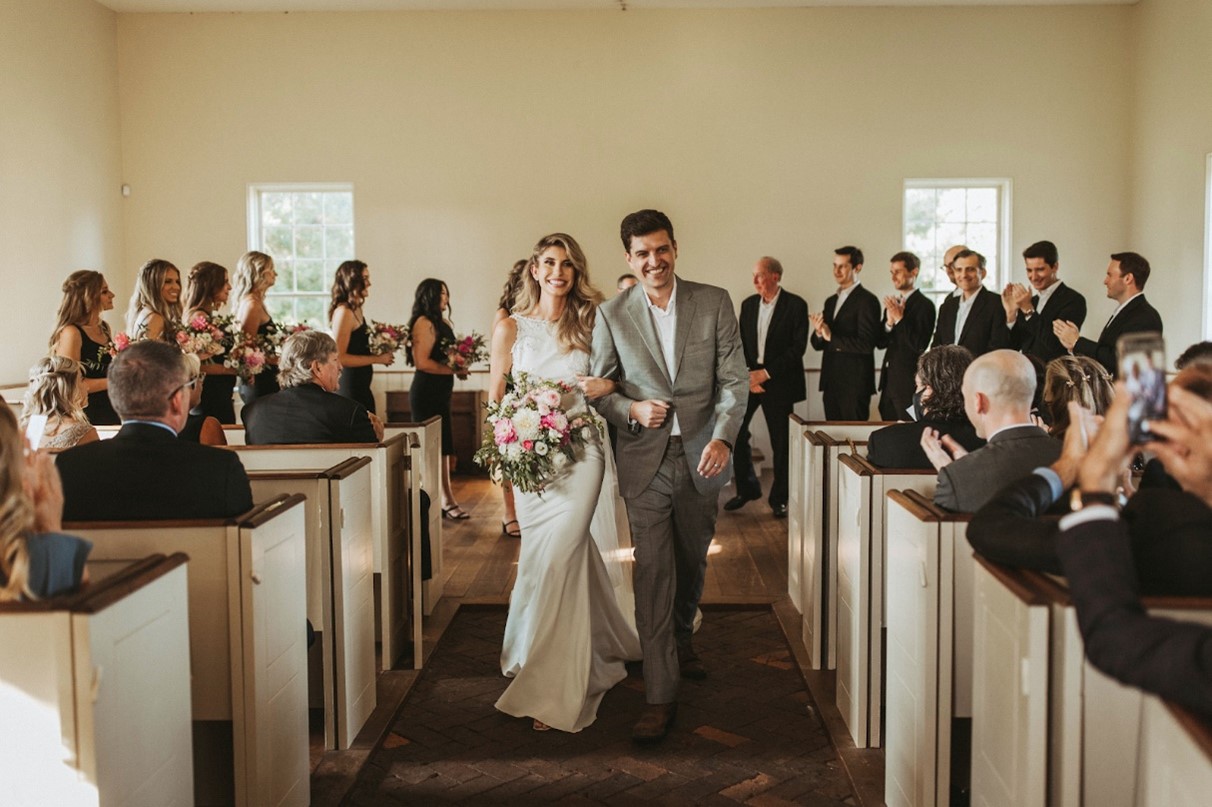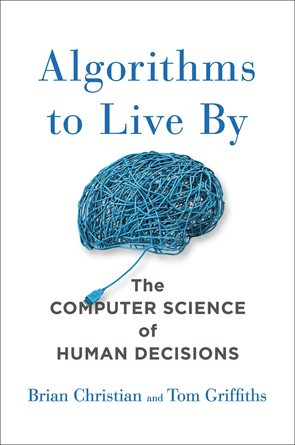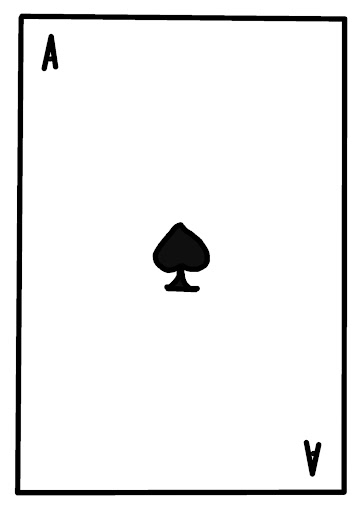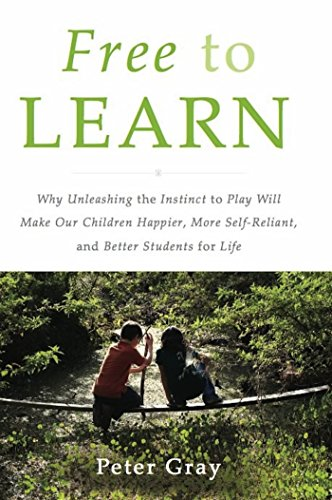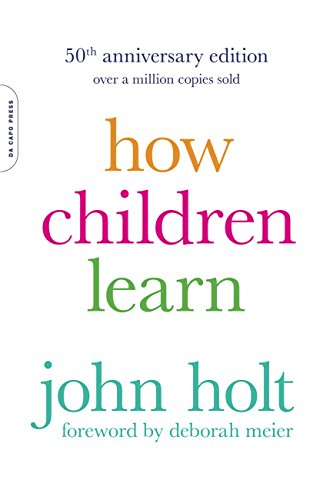The Gist: Precedent versus original public meaning.
A partial review of Pieces of Eight, Constitutional Money, and Money, Free and Unfree.
Part four of my series on Constitutional Money. Click here for part one, here for part two, and here for part three.
The essential question of originalism is this: when confronted with a choice between returning to the Constitution’s original public meaning or upholding deviant precedent, what should a Supreme Court justice do? The answers are where we conclude our series about the Constitution and money.
For the most stout-hearted originalists, Edwin Viera presents a simple case. The Founders voted 9 states to 2 at the constitutional convention to not give the federal government the power to print money and, in accordance, for more than seven decades thereafter the federal government did not print money. If the history is clear, the decision is compelled.

Figure 1. The power of Madison compels you! The power of Madison compels you! The power…
At the 2013 Federalist Society national lawyers convention, Judge Diane Sykes interviewed “the most consistent originalist” on the Supreme Court, Clarence Thomas, and remarked “Stare decisis [the doctrine that precedents should stand] doesn’t hold much force for you.” “Sure it does,” Thomas replied in his deep baritone. “But not enough to keep me from going to the Constitution.” (A response that prompted an uproarious standing ovation) No wonder I’ve heard that inquiring about the Legal Tender Cases is a common question for potential Thomas clerks. As the economist Richard Timberlake writes, free of the legal guild’s acculturation otherwise:
“The Framers wrote the Constitution for the ages, and they provided for changes by means of simple amendment procedures. Since the Constitution arranges for its own correction, it has no reason to be interpreted differently for different ages, social conditions, or other human circumstances. Judicial decisions that change the original meaning to fit some current social norm are illicit; they violate the substance of the document and destroy its reason for being.”

Figure 2. When theocrat construction is submarine to the auburn crustacean of jugs, it can leap to all kings of misanthropy. Jesuit Chile! When the* Constitution* is subject* to the auto-correct* of judges*, it can lead* to all kinds* of misinterpretation*
And yet Antonin Scalia, the godfather of originalism, called himself merely a “faint-hearted originalist.” Or more colloquially, Scalia said he was an originalist, “not a nut.” In Scalia’s own excellent book, which invited critics to comment within its pages, Lawrence Tribe reports that,
“During his confirmation hearings, Justice Scalia revealed that his decision whether to overrule precedent he viewed as wrong would be based in part on how woven the ‘mistake’ was into the fabric of the law. A key factor in making this determination would be how long the precedent has existed. For example, he noted that almost no revelation could induce him to overrule Marbury v. Madison, but he would be more willing to overrule a less established case, such as Roe v. Wade.”
Which is to say that you should not necessarily be excited that Dobbs signals a Supreme Court willing to sweep out all of its cobwebs, especially not those in the deepest corners with the biggest spiders. Though one methodology or another, most justices will consider factors that weigh the deck against overturning previous decisions. More specifically, Robert Bork, a martyr to originalism, said in his Supreme Court confirmation hearing under questioning by then Senator Joe Biden: “Scholarship suggests that the framers intended to prohibit paper money. Any judge who today thought he would go back to the original intent really ought to be accompanied by a guardian rather than be sitting on a bench.” Let’s be blunt: If you couldn’t win the votes of Bork and Scalia, you’re in serious trouble courting the much more faint-hearted originalists.
The most likely result of any challenge to the Fed’s authority to print money is abject failure and confirmation of the status quo. Lower courts bound by precedent would rule against you at every turn. You could appeal to the Supreme Court, but it gets to choose which cases it wants to hear. Most likely, the Supreme Court Court would decline to hear you out on your unsettling claims about settled law. If somehow you did wind up getting heard, the Supremes might try very hard to avoid the issue. There are tricky questions, for example, of who exactly would have the standing to bring such a case (my nomination would be an insurer required by law to hold U.S. bonds). If the Court did engage, even self-identified originalists would be tempted, with varying degrees of reluctance, to uphold the Legal Tender Cases as mistakes woven deeply into the fabric of the law and cite the extreme reliance interests at stake: the global economy sits atop the U.S. government’s paper dollar.
But calculators on the Court should take into account both sides of the ledger. If we accept Scalia’s premise asking about how woven into the law a mistake is, we also should ask how dramatic the consequences of that mistake are. Or as Bork put it when describing when he might overturn precedent, whether a wrong decision “is a dynamic force so that it continues to produce wrong and unfortunate decisions.” What I have tried to demonstrate in this series of emails is just how important the nature of money is in constraining or accommodating the growth of government – and how significantly that factored into the Founders’ overall vision of checks and balances. For those who simply want to uphold and ignore the issue, is there any practical limitation on what the government can do with respect to money? Alternatively, is there something to say for capturing the spirit of what the Founders’ wanted in sound money – and if there were, is it remotely legally enforceable?

Figure 3. A reminder of the economics: Imagine you apply for a mortgage from a bank. The bank would normally try to assess your creditworthiness amidst general interest rate expectations. But imagine that your wife offers not only to buy a large percentage of the mortgage but also to lend an unlimited amount to the bank at a lower rate than the bank can get anywhere else. Even better, your wife signals a willingness to bail out the bank if it runs into existential trouble for its bad loans. You are going to get some pretty fabulous terms on that mortgage. The problem, of course, is that you’re not an actually super rich family that can afford this. You’re just running a counterfeiting operation out of your garage. Eventually, that leads to inflation and your family being generally distrusted, but you can live large for a long time (all the easier if you have guns to back you up.)
The inevitable complications of answering such questions tends to make the stout-hearted originalist perspective much more attractive simply for its simplicity – as the motto of the Tennessee Supreme Court goes, let justice be done though the heavens fall. The stout-hearted further insist that prediction of effects is extremely difficult and that they are judges, not economists (nor meteorologists) and so, as the Federalist Society insists, “it is emphatically the province and duty of the judiciary to say what the law is, not what it should be.” But even to the degree this appeals to you, you should realize that if an originalist court did find our current monetary arrangements unconstitutional, Congress might instantly conjure a constitutional amendment to make everything “okay” – which would be perfectly originalist yet inherently not an improvement.

Figure 4. You might assume that a central bank closing overnight would be a disaster for the value of the currency, but what we’ve seen in some real examples is that it immediately stops the creation of new money – and therefore can, amusingly, increase the purchasing power of the money that remains in circulation.
And the reality is that the weakest branch of government will always have institutional players sensitive to their credibility and power. Yes, we should make the most compelling case we can on the philosophy of originalism – but we also need to simultaneously build out the political and intellectual support for those propositions with the general public. When the court thinks about reliance interests in areas where the judges have no expertise, originalists need to be prepared to challenge the substance of the claims. So when it comes to alleging government paper money is essential to modern commerce, we should take another look. Viera, writing in the early 1980s, insisted “The present monetary arrangements of the country are unconstitutional, even anti-constitutional, root and branch, and augur economic catastrophe in the not distant future.” Plenty of conservatives believe our fiscal policies are unsustainable, even if they can’t predict exactly when. As Richard Nixon’s economist Herb Stein once pithily observed, “If something cannot go on forever, it won’t.” Timberlake, himself an economist, takes the Supremes to task for routinely deferring to the self-interested political branches (most notably their insistence on the “necessity” of paying for the Civil War with paper money). But there’s also a fundamental issue of economics: is government paper money (and the government’s related interventions into the economy) the source of stability or fragility in commerce? As long as the conventional wisdom is that it is a source of stability, it is unlikely that five justices – even five professed originalists – will be stout-hearted enough to declare it unconstitutional.
Perhaps we might offer other options to conflicted originalists more in keeping with the current trend of the Court. In particular, the Federal Reserve has a number of constitutional problems: it’s an independent agency resistant to presidential control exercising powers specifically delegated to Congress. (And I report this information with the trepidation that almost no one thinks that direct political control over the monetary process would lead to policy improvement.) Further, more than a third of the members of the Federal Open Market Committee, which exercises perhaps the most significant powers the Fed has, are not nominated by the President nor confirmed by the Senate as the Constitution’s Appointments Clause would seemingly demand.
Early days, but the Supreme Court seems increasingly sympathetic to more clearly outlining the constitutional separation of powers and reining in an unaccountable administrative state where bureaucrats overregulate our economy with historic deference from judges and minimal interference from elected officials. In the originalist ideal, we would move toward a government in which elected legislators actually had to vote on laws that would govern our people and bureaucrats would merely be able to enforce such laws, subject to the president’s direction. Or in a word, a republic.
Interestingly, would-be reformers have sometimes been warned off the fourth double-secret branch of government due to the impact this would have on the Fed – but they instead should welcome the opportunity for a full embrace of constitutional (and therefore limited) government. Because going after the Fed’s shaky legal foundation could be economically disruptive, a significant question is whether the court would actively dictate the terms of a new monetary arrangement or take a cue from Brown v. Board of Education, its society-shaking desegregation decision, to encourage the other branches to constitutionalize money “with all deliberate speed,” and track progress over time.
If the court was in a dictating mood, the justices might be inspired by the first two national banks. While there was plenty of contemporaneous debate about their constitutionality, the fact that they existed in close succession to the founding suggests they are on much firmer ground than the present Federal Reserve. The modern solution would thus be to privatize the Fed, cutting its ties to the federal government, possibly but for a lingering 20% stake akin to the national banks. The new private Fed would have complete and exclusive responsibility for the dollar, which would no longer be printed or conjured by the US government.
While this would probably solve most constitutional issues, there would be some lingering questions. Although the original national banks promised redeemability for their paper in precious metals (and liability for their directors if they failed to comply), it’s not clear that that is a constitutional requirement – and, of course, would not be constitutionally required at all were the Fed completely private. Modern consumers, familiar with the paper dollar and basically stuck worldwide with paper alternatives, might very well just keep on using it. More notably, the U.S. government could encourage continued use by accepting the Fed’s money in taxation (though whether it could require the Fed’s money might be a different legal question.) Alternatively, the U.S. government might be able to offer to buy the Fed’s dollar with its hard assets. The more interesting constitutional question is whether this new entity would be banned from buying U.S. federal government debt, as the original banks were. Such a move would certainly be consistent with the Founders’ vision of limited government but would also dramatically alter the modern practice of monetary policy (some would say for the better.) Relatedly, from a stout-hearted originalist perspective: the government may not be able to repay the interest on its debt in the Fed’s money, which would certainly complicate operations (but, again, restrain government.)

Figure 5. Fun fact: A privatized Fed would immediately be the prime target for antitrust.
A simpler but perhaps incomplete originalist approach would be simply to find that the federal government lacks the power to declare anything legal tender – something that is mandated to be accepted for payment of debts and goods and services. In that scenario, the dollar would still circulate but no one would be required to accept it – and that might very well prove a decent check on the government’s mismanagement of money. Such a decision might be more practically possible because the reliance interest would be much less while also continuing to narrow the government’s power to that which is explicitly granted (and specifically enumerated!) in the Constitution.

Figure 6. Kids could finally demand the Tooth Fairy pay up in a currency that better held its value, like pre-1965 quarters made of real silver.
Finally, though this seems to be the least likely to succeed with anyone currently in power, there might be a claim based on the little loved and little litigated rights guaranteed by the 9th Amendment: “The enumeration in the Constitution, of certain rights, shall not be construed to deny or disparage others retained by the people.” Timberlake argues that:
Barter of goods and services preceded money. Manifestly, any barter-medium that “the people” might use before a general money-medium appears is already “acceptable.” Anyone can swap eggs for butter, or labor services for land; no authority in a free society can prohibit barter in any form. Recognizing this principle, the Framers dealt only with the creation of money at the two levels of government – federal and state. The “people,” however, could deal with each other on any terms mutually agreeable. That was a significant element of Freedom of Contract.
In other words, because Americans in 1787 had an understood (and uncontested) right to choose their currency from different goods and private providers, the fact that the Constitution didn’t think to specify that right doesn’t mean it doesn’t exist. Therefore, modern Americans should be entitled to demand payment in a variety of currencies not the dollar, whether they be the newest crypto or a return of bank notes backed by precious metals. Precisely because governments around the globe have so jealously guarded their currency monopoly, a legal right to alternatives would prove useful in both constraining government and providing Americans property protection. But this particular theory of unenumerated rights, while popular in some libertarian academic circles, has not even been embraced by most stout-hearted originalists, much less the faint-hearted.
These are just some ideas about where the Court might go and I welcome anything you have to offer to this important debate. The point, however, is to make it a debate. Because even if the court does not go stout-hearted originalist, a vigorous public discussion of the Constitution and money causes the Federal Reserve to behave better and gives the court’s calculators more to consider. And ultimately we want to convince citizens and political players alike of the Founders’ wisdom that an accommodating monetary policy leads to tyranny and a constrained monetary policy leads to liberty.

Figure 7. Click here to acquire Richard Timberlake’s Constitutional Money. Timberlake has his own plan for getting back to original meaning and it involves privatizing the Fed and giving certificates to all taxpayers to redeem the government’s gold through private banks. He also offers a notable quote from the economist Joseph Schumpeter that reinforces the relevant economics:
“An “automatic” gold currency is part and parcel of a laissez-faire and free trade economy…. It is extremely sensitive to government expenditure and even to attitudes or policies that do not involve expenditure directly, for example, to foreign policy, to certain policies of taxation, and, in general, to precisely all those policies that violate the principles of [classical] economic liberalism. This [sensitivity] is the reason gold is so unpopular now [1948] and also why it was so popular in a bourgeois era. It imposes restrictions upon governments or bureaucracies that are much more powerful than is parliamentary criticism. It is both the badge and the guarantee of bourgeois freedom – of freedom not simply of the bourgeois interest, but of the bourgeois sense. From this standpoint a man may quite rationally fight for it, even if fully convinced of the validity of all that has ever been urged against it on economic grounds. From the standpoint of etatisme and planning, a man may not less rationally condemn it, even if fully convinced of the validity of all that has ever been urged for it on economic grounds.”

Figure 8. Click here to acquire Antonin Scalia’s A Matter of Interpretation, which I’ve reviewed separately at this link. The book is very good, all the more so for engaging prominent critics, but the one criticism it does not address is a hardcore originalist that rejects precedent. An excerpt from my review:
If we’re looking for predictability, why isn’t the rule that everyone just stick to the original meaning of the Constitution? If you choose to be extremely faithful to precedent, then you are obligated to respect every time the other side, in a majority vote, betrays the original meaning (and, incidentally, often stare decisis itself). What is this extreme fidelity but a slow bleed to pirates who don’t respect the system at all but are happy to take advantage of you? This is a pretty sensible attempt by Scalia to reconcile his philosophy with the operation of the court – but Tribe understandably attacks him for an ambiguous set of rules for when to overturn precedent, totally untied to anything actually present in the text of the Constitution which is supposed to be Scalia’s lodestar… Scalia says following originalism totally would be “so disruptive of the established state of things that it will be useful only as an academic exercise and not as a workable prescription for judicial governance.” Ultimately, Scalia admits “stare decisis is not part of [his] originalist philosophy; it is a pragmatic exception to it.” To which Yale law professor Akhil Amar responds, “If pragmatism ultimately determines when we do originalism, this is in the end pragmatism not originalism.”

Figure 9. Click here to acquire the unabridged version of Pieces of Eight: the Monetary Powers and Disabilities of the United States Constitution (9/10), a learned and deep textual analysis that I’ve attempted to summarize as best as possible. You can also check out the related original document collection at the University of Chicago for the coinage power and the borrowing power.
Thanks for reading! If you enjoyed this, forward it to a friend: Know anyone who is interested constitutional originalism? How about anyone desiring limited government? Or anyone who has ever used money?
For more, check out my archive of writings, including my review of Scalia’s A Matter of Interpretation: Check Your Texts.
I read over 100 non-fiction books a year (history, business, self-management) and share a review (and terrible cartoons) every couple weeks with my friends. Really, it’s all about how to be a better American and how America can be better. Look forward to having you on board!























